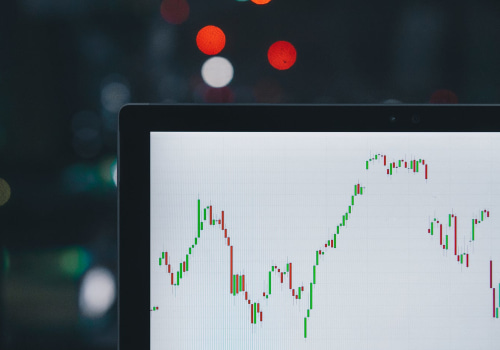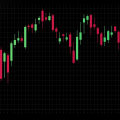In the world of forex trading, there are various terms and concepts that traders need to be familiar with in order to navigate the markets successfully. One such concept is "swap." In this article, we will delve into the intricacies of forex swaps, exploring what they are, how they work, and their significance in the forex market. Whether you're a seasoned trader or a beginner looking to expand your knowledge, this comprehensive guide will provide you with the expertise and understanding to incorporate swaps into your forex trading strategies.
What is Forex?
Before we dive into the specifics of swaps in forex, let's first establish a foundational understanding of the forex market itself. The foreign exchange market, commonly known as forex, is a decentralized global marketplace where currencies are traded. It is the largest and most liquid financial market in the world, with trillions of dollars exchanged daily.
Understanding Swaps
Now that we have a basic understanding of forex, let's explore the concept of swaps. In the context of forex trading, a swap refers to the simultaneous buying and selling of the same currency for different value dates. It involves the exchange of interest payments, based on the interest rate differentials between the two currencies involved in the trade.
Swaps are primarily used to extend the settlement date of an open position, allowing traders to hold onto a position for a longer period without actually taking physical delivery of the underlying asset. The primary purpose of a swap is to manage or mitigate the risk associated with changes in interest rates.
How Do Swaps Work in Forex?
In a forex swap transaction, two parties agree to exchange a set amount of one currency for another at an agreed-upon exchange rate. The exchange takes place on the spot date, and the positions are kept open until the future date specified in the swap agreement. At the end of the agreed-upon period, the positions are reversed, and the initial exchange is unwound.
The exchange of interest payments is a key component of forex swaps. Depending on the interest rate differentials between the currencies involved, one party may pay or receive interest from the other. These interest payments are calculated based on the notional value of the swap and the prevailing interest rates.
Types of Forex Swaps
There are several types of forex swaps, each serving a specific purpose in the market. Let's explore three common types of forex swaps:
1. Interest Rate Swaps
Interest rate swaps are the most common type of forex swaps. They involve the exchange of fixed and floating interest rate payments between two parties. The purpose of an interest rate swap is to hedge against fluctuations in interest rates, allowing participants to manage their interest rate exposure more effectively.
2. Currency Swaps
Currency swaps involve the exchange of principal and interest payments in one currency for another currency. These swaps are typically used by multinational corporations and financial institutions to obtain a foreign currency at a favorable exchange rate and manage their exposure to foreign exchange risk.
3. Overnight Index Swaps
Overnight index swaps (OIS) are short-term interest rate swaps that allow market participants to hedge against changes in overnight interest rates. They are commonly used by banks and institutional investors to manage their funding costs and interest rate risks.
Calculating Forex Swaps
The calculation of forex swaps involves considering several factors, including the notional value of the swap, the prevailing interest rates of the currencies involved, and the length of the swap agreement. To calculate the swap, you can use the following formula:
Swap = (Notional Value) x (Interest Rate Differential) x (Number of Days) / (Base Currency Conversion Rate)
Factors Affecting Forex Swaps
Several factors influence the size and direction of forex swaps. These factors include:
Interest Rate Differentials: The difference between the interest rates of the currencies involved in the swap affects the size of the swap.
Market Conditions: Volatility and liquidity in the market can impact swap rates.
Central Bank Policies: Monetary policy decisions by central banks can influence interest rates and, consequently, swap rates.
Economic Data Releases: Key economic indicators can affect currency valuations and, consequently, swap rates.
Advantages of Forex Swaps
Forex swaps offer several advantages to market participants, including:
Flexibility: Swaps allow traders to extend the settlement date of their positions, providing flexibility in managing their trades.
Risk Management: Swaps enable market participants to hedge against interest rate and currency risks.
Cost Efficiency: Swaps can be a cost-effective way to access foreign currencies and manage funding costs.
Market Liquidity: The forex swap market is highly liquid, ensuring ease of execution for participants.
Risks Associated with Forex Swaps
While forex swaps provide various benefits, they are not without risks. Some of the risks associated with forex swaps include:
Interest Rate Risk: Changes in interest rates can affect the profitability of swap positions.
Counterparty Risk: There is a risk of default by the counterparty involved in the swap agreement.
Market Risk: Fluctuations in currency exchange rates can impact the value of swap positions.
Regulatory Risk: Changes in regulatory requirements can affect the availability and terms of forex swaps.
Strategies Utilizing Forex Swaps
Traders employ various strategies that incorporate forex swaps to enhance their trading performance. Some common strategies include:
Carry Trading: Traders take advantage of interest rate differentials between two currencies by borrowing in a low-interest-rate currency and investing in a higher-interest-rate currency.
Hedging: Market participants use forex swaps to hedge against interest rate and currency risks associated with their existing positions.
Yield Curve Arbitrage: Traders exploit discrepancies in interest rates along the yield curve to profit from swaps.
The Role of Central Banks in Forex Swaps
Central banks play a crucial role in forex swaps, particularly through their monetary policy decisions. Central banks use forex swaps to influence interest rates, manage liquidity in the market, and stabilize their respective currencies. These interventions aim to maintain stability and foster economic growth.
Impact of Swaps on Currency Valuations
Forex swaps can have an impact on currency valuations. When market participants engage in significant swap transactions, it can affect the supply and demand dynamics of currencies, leading to changes in their values. Central bank interventions through forex swaps can also influence currency valuations.
The Legality of Forex Swaps
Forex swaps are legal financial instruments used by market participants worldwide. However, it's essential to comply with the regulatory requirements of the jurisdiction in which you operate. Different countries may have specific regulations governing forex swaps, and it's crucial to adhere to them to ensure legal and compliant trading activities.
1. How are forex swaps different from futures contracts?
Forex swaps and futures contracts are both derivative instruments used in forex trading. However, there are significant differences between the two. Forex swaps involve the exchange of currencies and interest payments, while futures contracts are standardized agreements to buy or sell a specific currency at a predetermined price and date.
2. Are forex swaps available for all currency pairs?
Forex swaps are available for most major and minor currency pairs. However, the availability and liquidity of swaps may vary depending on the currency pair and market conditions.
3. What are the costs involved in forex swaps?
The costs associated with forex swaps include the interest rate differentials between the currencies involved and any transaction fees charged by brokers or financial institutions.
4. Can forex swaps be used for hedging purposes?
Yes, forex swaps are commonly used for hedging purposes. Traders and corporations can use swaps to mitigate risks associated with interest rate fluctuations and currency exposure.
5. Do forex swaps have an expiration date?
Forex swaps do not have a fixed expiration date. The length of a swap agreement can vary depending on the needs of the market participants involved.
6. How can I minimize the risks associated with forex swaps?
To minimize risks associated with forex swaps, it's essential to carefully analyze market conditions, monitor interest rate differentials, and manage counterparty risk. Additionally, using appropriate risk management tools and strategies can help mitigate potential losses.
Conclusion
In conclusion, understanding forex swaps is vital for any trader or investor looking to navigate the forex market effectively. Swaps provide flexibility, risk management opportunities, and cost-efficient access to foreign currencies. By incorporating the knowledge gained from this comprehensive guide into your trading strategies, you can leverage the power of forex swaps to enhance your trading performance and achieve your financial goals.












Leave Reply